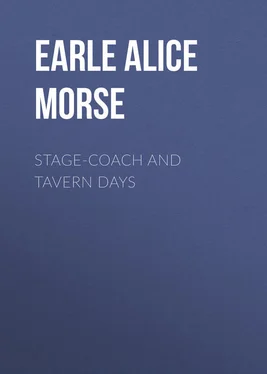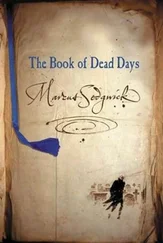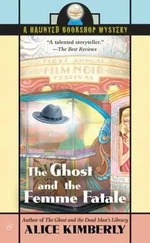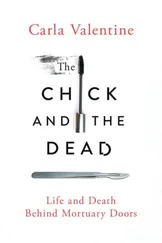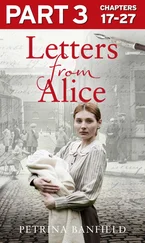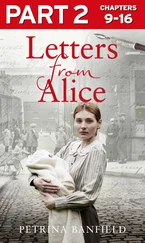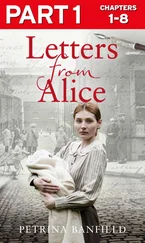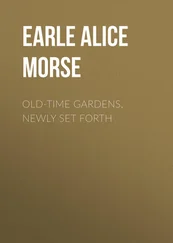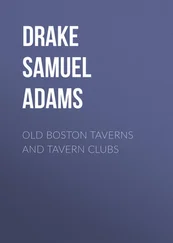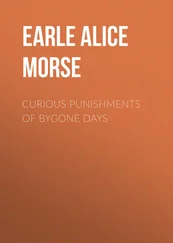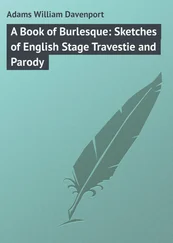Alice Earle - Stage-coach and Tavern Days
Здесь есть возможность читать онлайн «Alice Earle - Stage-coach and Tavern Days» — ознакомительный отрывок электронной книги совершенно бесплатно, а после прочтения отрывка купить полную версию. В некоторых случаях можно слушать аудио, скачать через торрент в формате fb2 и присутствует краткое содержание. Жанр: foreign_antique, foreign_prose, на английском языке. Описание произведения, (предисловие) а так же отзывы посетителей доступны на портале библиотеки ЛибКат.
- Название:Stage-coach and Tavern Days
- Автор:
- Жанр:
- Год:неизвестен
- ISBN:нет данных
- Рейтинг книги:4 / 5. Голосов: 1
-
Избранное:Добавить в избранное
- Отзывы:
-
Ваша оценка:
- 80
- 1
- 2
- 3
- 4
- 5
Stage-coach and Tavern Days: краткое содержание, описание и аннотация
Предлагаем к чтению аннотацию, описание, краткое содержание или предисловие (зависит от того, что написал сам автор книги «Stage-coach and Tavern Days»). Если вы не нашли необходимую информацию о книге — напишите в комментариях, мы постараемся отыскать её.
Stage-coach and Tavern Days — читать онлайн ознакомительный отрывок
Ниже представлен текст книги, разбитый по страницам. Система сохранения места последней прочитанной страницы, позволяет с удобством читать онлайн бесплатно книгу «Stage-coach and Tavern Days», без необходимости каждый раз заново искать на чём Вы остановились. Поставьте закладку, и сможете в любой момент перейти на страницу, на которой закончили чтение.
Интервал:
Закладка:
In the early half of the eighteenth century the genteel New York tavern was that of Robert Todd, vintner. It was in Smith (now William) Street between Pine and Cedar, near the Old Dutch Church. The house was known by the sign of the Black Horse. Concerts, dinners, receptions, and balls took place within its elegant walls. On the evening of January 19, 1736, a ball was therein given in honor of the Prince of Wales’s birthday. The healths of the Royal Family, the Governor, and Council had been pledged loyally and often at the fort through the day, and “the very great appearance of ladies and gentlemen and an elegant entertainment” at the ball fitly ended the celebration. The ladies were said to be “magnificent.” The ball opened with French dances and then proceeded to country dances, “upon which Mrs. Morris led up to two new country dances made upon the occasion, the first of which was called the Prince of Wales, the second the Princess of Saxe-Gotha.”
The Black Horse was noted for its Todd drinks, mainly composed of choice West India rum; and by tradition it is gravely asserted that from these delectable beverages was derived the old drinking term “toddy.” (Truth compels the accompanying note that the word “toddy,” like many of our drinking names and the drinks themselves, came from India, and the word is found in a geographical description of India written in 1671, before Robert Todd was born, or the Black Horse Tavern thought of.)
When Robert of toddy fame died, after nine years of successful hospitality, his widow Margaret reigned in his stead. She had a turn for trade, and advertised for sale, at wholesale, fine wines and playing cards, at reasonable rates. In 1750 the Boston Post made this tavern its headquarters, but its glory of popularity was waning and soon was wholly gone.
At the junction of 51st and 52d streets with the post-road stood Cato’s Road House, built in 1712. Cato was a negro slave who had so mastered various specialties in cooking that he was able to earn enough money to buy his freedom from his South Carolina master. He kept this inn for forty-eight years. Those who tasted his okra soup, his terrapin, fried chicken, curried oysters, roast duck, or drank his New York brandy-punch, his Virginia egg-nogg, or South Carolina milk-punch, wondered how any one who owned him ever could sell him even to himself. Alongside his road house he built a ballroom which would let thirty couple swing widely in energetic reels and quadrilles. When Christmas sleighing set in, the Knickerbocker braves and belles drove out there to dance; and there was always sleighing at Christmas in old New York – all octogenarians will tell you so. Cato’s egg-nogg was mixed in single relays by the barrelful. He knew precisely the mystic time when the separated white and yolk was beaten enough, he knew the exact modicum of sugar, he could count with precision the grains of nutmeg that should fleck the compound, he could top to exactness the white egg foam. A picture of this old road house, taken from a print, is here given. It seems but a shabby building to have held so many gay scenes.
The better class of old-time taverns always had a parlor. This was used as a sitting room for women travellers, or might be hired for the exclusive use of some wealthy person or family. It was not so jovial a room as the taproom, though in winter a glowing fire in the open fireplace gave to the formal furnishings that look of good cheer and warmth and welcome which is ever present, even in the meanest apartment, when from the great logs the flames shot up and “the old rude-furnished room burst flower-like into rosy bloom.” We are more comfortable now, with our modern ways of house-heating, but our rooms do not look as warm as when we had open fires. In the summer time the fireplace still was an object of interest. A poet writes: —
“’Tis summer now; instead of blinking flames
Sweet-smelling ferns are hanging o’er the grate.
With curious eyes I pore
Upon the mantel-piece with precious wares,
Glazed Scripture prints in black lugubrious frames,
Filled with old Bible lore;
The whale is casting Jonah on the shore:
Pharaoh is drowning in the curling wave.
And to Elijah sitting at his cave
The hospitable ravens fly in pairs
Celestial food within their horny beaks.”
The walls of one tavern parlor which I have seen were painted with scenes from a tropical forest. On either side of the fireplace sprang a tall palm tree. Coiled serpents, crouching tigers, monkeys, a white elephant, and every form of vivid-colored bird and insect crowded each other on the walls of this Vermont tavern. On the parlor of the Washington Tavern at Westfield, Massachusetts, is a fine wallpaper with scenes of a fox-chase. This tavern is shown on the opposite page; also on page 45 one of the fine hand-wrought iron door-latches used on its doors. These were made in England a century and a half ago.
The taproom was usually the largest room of the tavern. It had universally a great fireplace, a bare, sanded floor, and ample seats and chairs. Usually there was a tall, rather rude writing-desk, at which a traveller might write a letter, or sign a contract, and where the landlord made out his bills and kept his books. The bar was the most interesting furnishing of this room. It was commonly made with a sort of portcullis grate, which could be closed if necessary. But few of these bars remain; nearly all have been removed, even if the tavern still stands. The taproom of the Wayside Inn at Sudbury, Massachusetts, is shown on page 19. It is a typical example of a room such as existed in hundreds of taverns a century ago. Another taproom may still be seen in the Wadsworth Inn. This well-built, fine old house, shown on page 47, is a good specimen of the better class of old taverns. It is three miles from Hartford, Connecticut, on the old Albany turnpike. It was one of twenty-one taverns within a distance of twenty miles on that pike. It was not a staging inn for every passing coach, but enjoyed an aristocratic patronage. The property has been in the same family for five generations, but the present building was erected by Elisha Wadsworth in 1828. It is not as old as the member of the Wadsworth family who now lives in it, Miss Lucy Wadsworth, born in 1801. Its old taproom is shown on page 51. This tavern was a public house till the year 1862.
Some of the furnishings of the taproom of the old Mowry Inn still are owned by Landlord Mowry’s descendants, and a group of them is shown on page 7. Two heavy glass beakers brought from Holland, decorated with vitrifiable colors like the Bristol glass, are unusual pieces. The wooden tankard, certainly two centuries old, has the curious ancient lid hinge. The Bellarmine jug was brought to America filled with fine old gin from Holland by Mayor Willet, the first Mayor of New York City. The bowl is one of the old Indian knot bowls. It has been broken and neatly repaired by sewing the cracks together with waxed thread. The sign-board of this old inn is shown on page 57. The house stood on the post-road between Woonsocket and Providence, in a little village known as Lime Rock. As it was a relay house for coaches, it had an importance beyond the size of the settlement around it.
Sometimes the taproom was decorated with broad hints to dilatory customers. Such verses as this were hung over the bar: —
“I’ve trusted many to my sorrow.
Pay to-day. I’ll trust to-morrow.”
Another ran: —
“My liquor’s good, my measure just;
But, honest Sirs, I will not trust.”
Another showed a dead cat with this motto: —
“Care killed this Cat.
Trust kills the Landlord.”
Still another: —
“If Trust,
I must,
My ale,
Will pale.”
Интервал:
Закладка:
Похожие книги на «Stage-coach and Tavern Days»
Представляем Вашему вниманию похожие книги на «Stage-coach and Tavern Days» списком для выбора. Мы отобрали схожую по названию и смыслу литературу в надежде предоставить читателям больше вариантов отыскать новые, интересные, ещё непрочитанные произведения.
Обсуждение, отзывы о книге «Stage-coach and Tavern Days» и просто собственные мнения читателей. Оставьте ваши комментарии, напишите, что Вы думаете о произведении, его смысле или главных героях. Укажите что конкретно понравилось, а что нет, и почему Вы так считаете.
